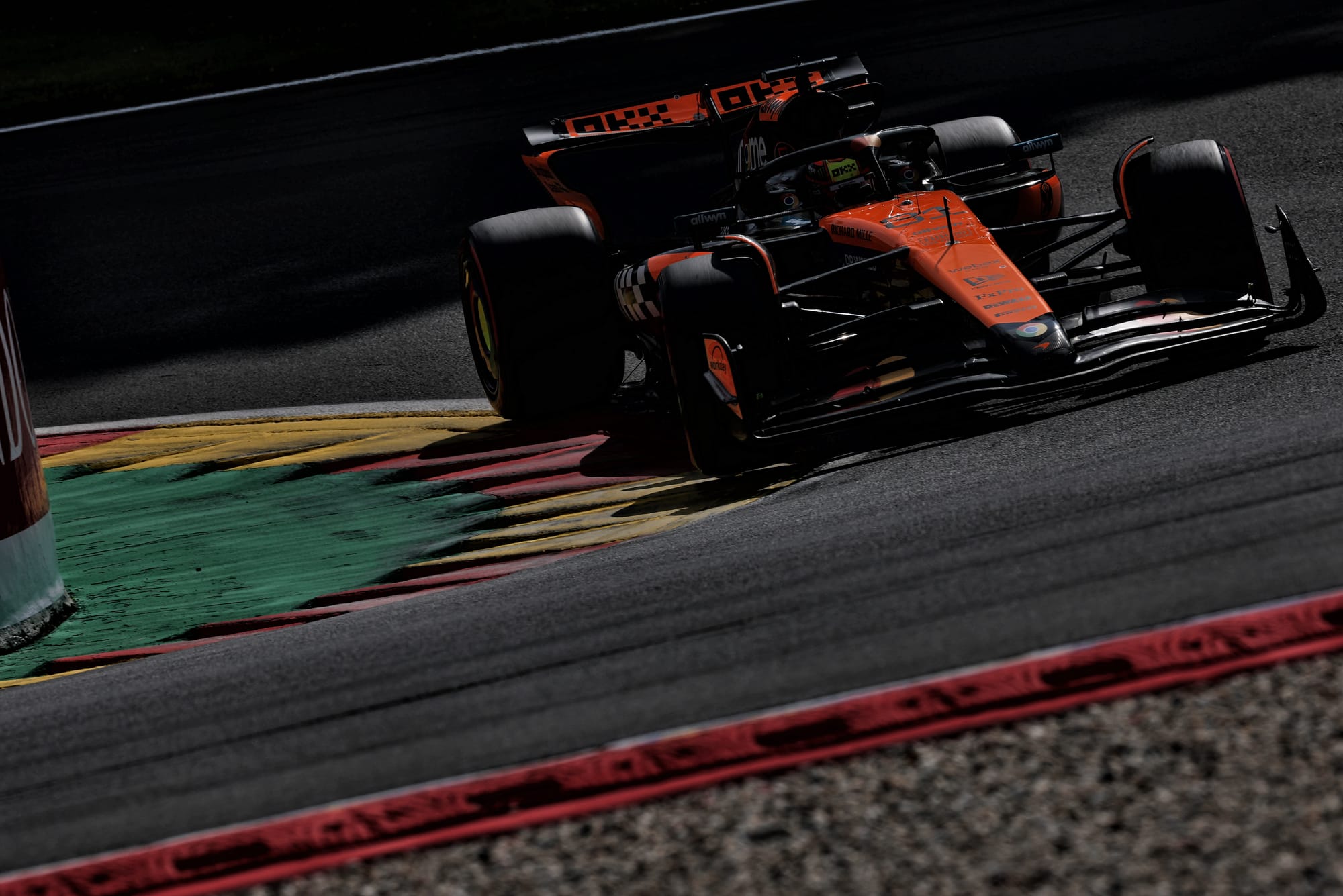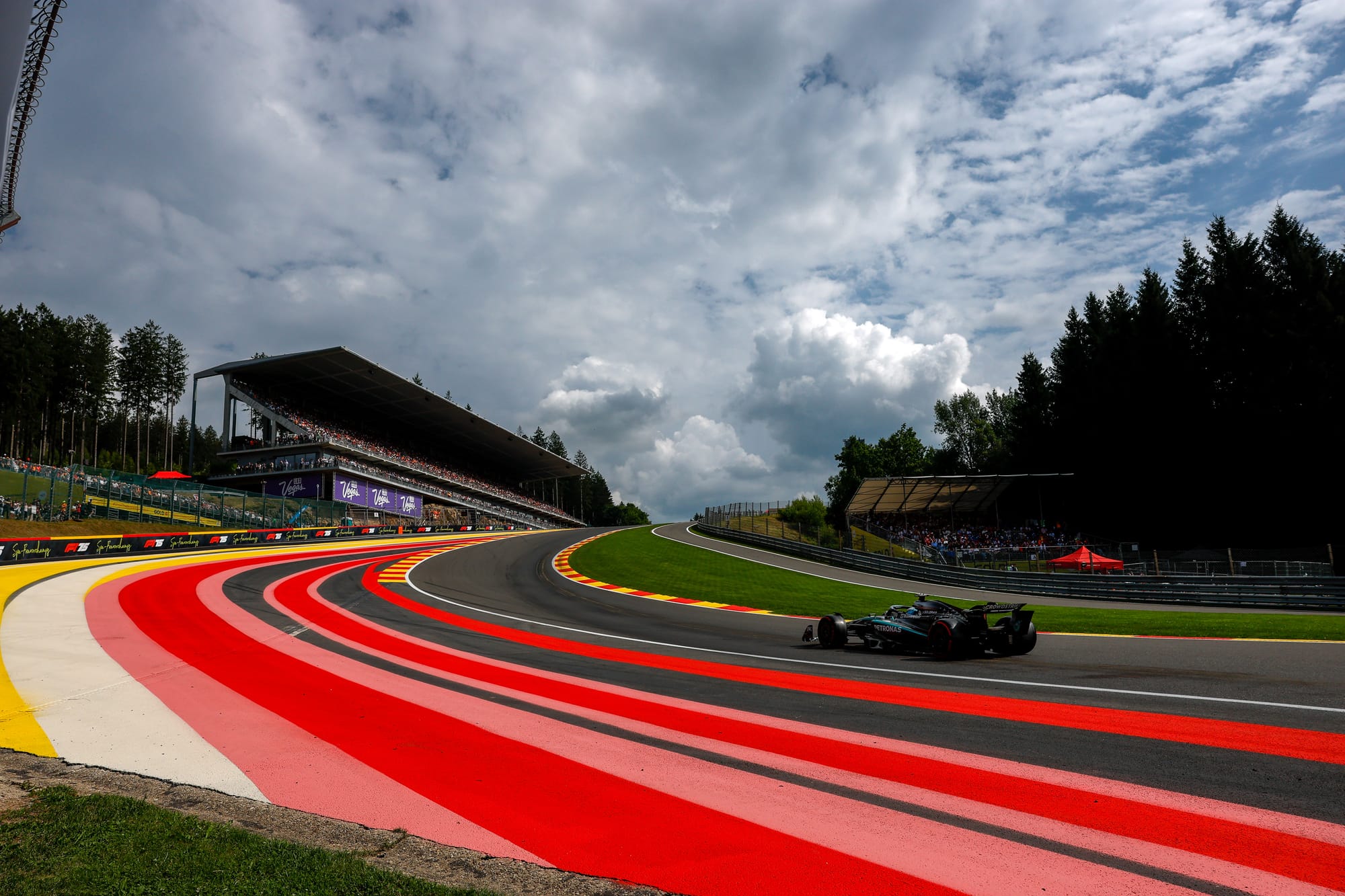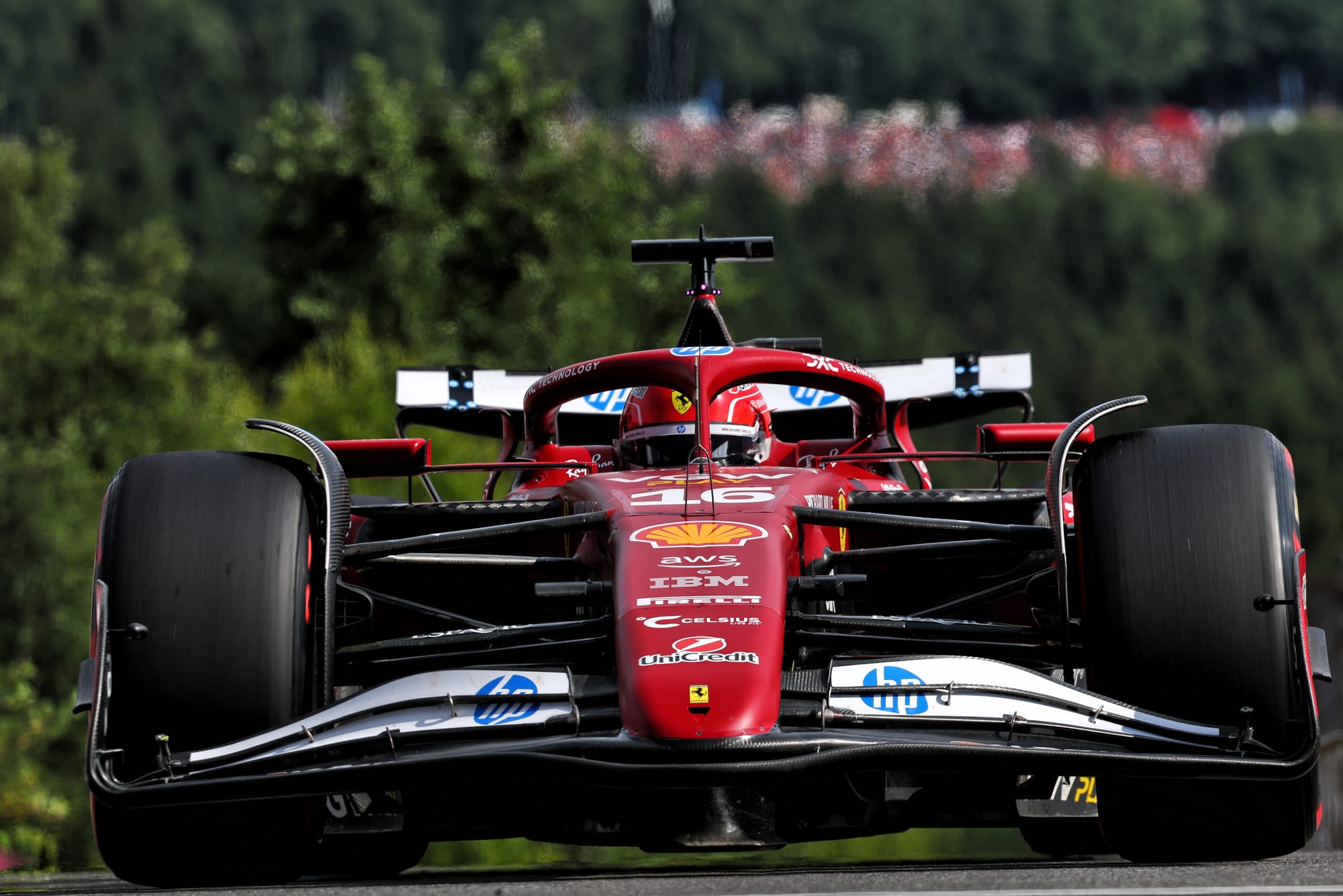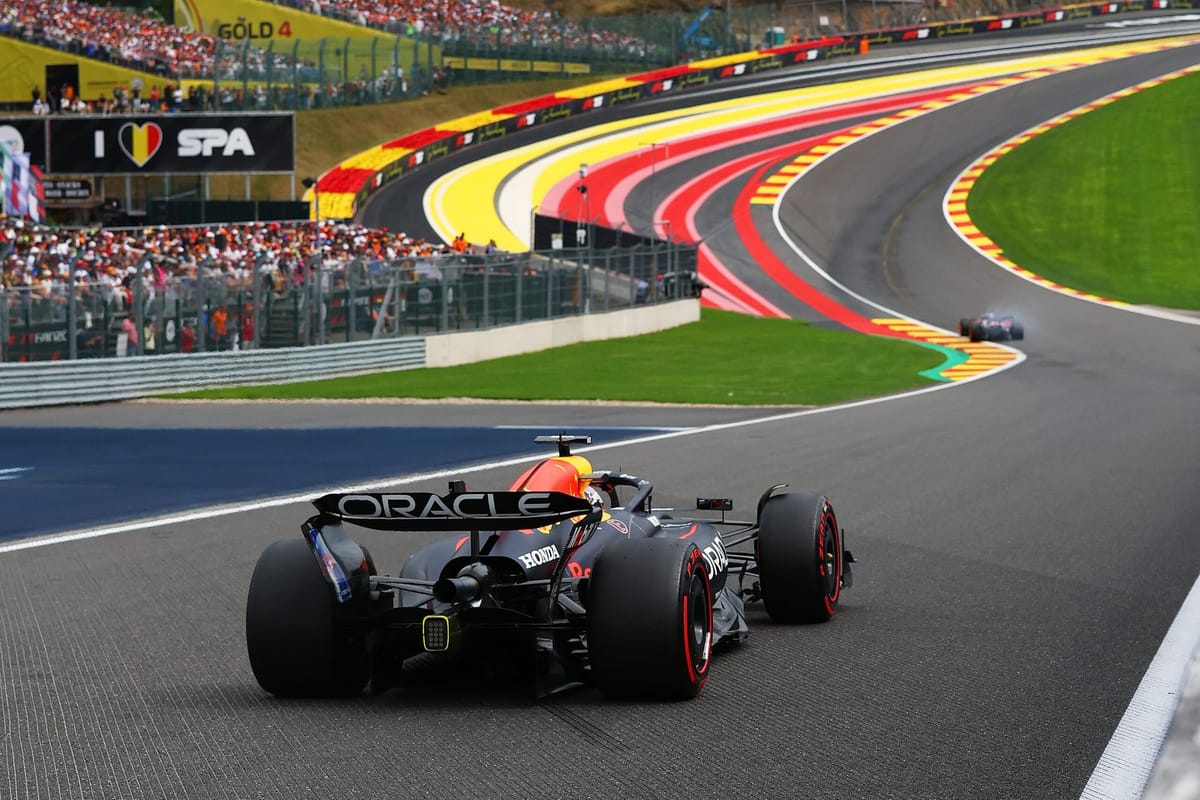With the looming threat of rain hanging over the Belgian Grand Prix, the wing choices of Formula 1 teams are likely to play a part in the outcome of the race.
Parc ferme reopened after the sprint race on Saturday morning, so teams had a small window to make any set-up changes before they were locked in for grand prix qualifying and the grand prix itself.
There are a few telltale signs of the choices teams have made.
You can look at sector one times, given the run out of La Source up to the top of Kemmel Straight is flat-out.

But this is vulnerable to being skewed by how a driver navigates the entry and exit of La Source, with multiple drivers making mistakes across the two qualifying sessions.
A better measure is looking at the speed trap differences between sprint and grand prix qualifying.
That speed trap figure can be calculated by subtracting the speed at the top of Eau Rouge/Raidillon from the speed at the end of the Kemmel Straight in each session.
Edd Straw has compiled that data, and the delta between the two sessions, to produce the below table.
Sprint vs GP qualifying delta comparison
Sprint (km/h)
Main (km/h)
Delta (km/h)
K. Antonelli
19.2
24.3
5.1
G. Russell
22.6
26.4
3.8
L. Norris
23.1
25.7
2.6
F. Alonso
26.3
28.8
2.5
L. Stroll
28
29.8
1.8
P. Gasly
19.5
21.3
1.8
A. Albon
25
26.5
1.5
C. Leclerc
27.5
28.9
1.4
Y. Tsunoda
26.5
27.1
0.6
O. Piastri
23.2
23.5
0.3
F. Colapinto
21.7
21.7
0
C. Sainz
26.1
25.7
-0.4
L. Hamilton
28.6
27.9
-0.7
E. Ocon
27.5
26.7
-0.8
I. Hadjar
23.5
22.6
-0.9
G. Bortoletto
28.3
26.9
-1.4
O. Bearman
28.7
27.3
-1.4
M. Verstappen
27.1
23.9
-3.2
N. Hulkenberg
32.6
27.6
-5
L. Lawson
30.2
25
-5.2
That data isn’t perfect, given that it can be influenced by drivers receiving a tow on the Kemmel Straight that would increase their speed.
These are also figures with the DRS open in all cases – although of course in the grand prix drivers won’t always be using it (and won’t use it at all if it’s wet). So it’s slightly skewed by how efficient each car’s DRS is. Plus, when it comes to overtaking in the dry, usually it will be a car without DRS being passed by a car with it.

So it’s impossible to be definitive, but it’s a decent measure of which drivers have piled on the downforce (or taken it off) after the sprint event.
The Mercedes drivers Kimi Antonelli and George Russell had the biggest increase in top speed between the sprint event and grand prix qualifying, as the team trimmed out its wings after the sprint.
Antonelli has suggested he will start Sunday’s race from the pitlane rather than 18th where he qualified, however, allowing Mercedes to adjust his wing levels to the conditions.
At the other end of the scale, Liam Lawson’s Racing Bulls and Nico Hulkenberg’s Sauber had the biggest speed trap decreases.
The Aston Martins are a curious one, with both Fernando Alonso and Lance Stroll’s speed increasing despite the team suggesting it had added more downforce for qualifying.
Another useful tool is to look at the speed of the cars at the end of the Kemmel Straight in grand prix qualifying, which does have the Aston Martin among the draggier cars.
Driver
Intermediate 1 (km/h)
E. Ocon
345.2
C. Leclerc
344
G. Russell
343.9
L. Hamilton
343.7
Y. Tsunoda
342.8
F. Colapinto
341.6
L. Norris
341.1
N. Hulkenberg
341
G. Bortoletto
341
A. Albon
341
L. Lawson
340.9
K. Antonelli
340.9
L. Stroll
340.8
F. Alonso
340.5
P. Gasly
339.6
C. Sainz
339.1
O. Bearman
338.4
O. Piastri
337.6
I. Hadjar
337.3
M. Verstappen
336.2
You can also see that while Esteban Ocon’s Haas was slower through the speed trap in grand prix qualifying versus sprint qualifying, he still had the fastest car at the end of the Kemmel Straight in grand prix qualifying.
We know Haas split its drivers’ downforce levels, with Ocon’s team-mate Ollie Bearman unsurprisingly towards the bottom with a higher-downforce set-up.

The Ferraris also both appear to be trimmed out for the race.
Meanwhile, Max Verstappen is at the bottom of that chart with a figure of 336.2km/h – again, we know Red Bull switched him to a higher downforce set-up (a higher downforce rear wing with cut-outs) for grand prix qualifying versus the sprint event.
That sets up an interesting race. If the grand prix is wet, you’d imagine Verstappen is well-placed with the Ferraris – and George Russell’s Mercedes in particular – potentially lacking downforce in comparison, and the McLaren drivers somewhere in the middle.
But if the rain clears before the race, then the straightline speed advantage Verstappen had over the McLarens in the sprint may be absent, while the Ferraris will be happy with their wing choices.
